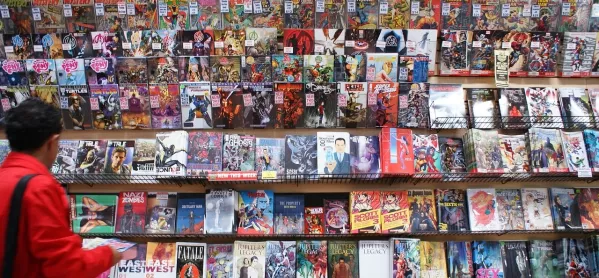From popular classics like Art Spiegelman’s Maus to more niche titles, such as Peter Sís’ The Wall: growing up behind the iron curtain or Ho Che Anderson’s King: a comics biography of Martin Luther King, Jr, graphic novels are used in history classrooms up and down the country, offering a fresh way of captivating pupils with stories of the past.
The graphic novel works so well as a supplementary teaching tool in classrooms because it can tell a story in a way different to other mediums, as text and image are combined to provide a narrative that brings topics alive. A picture on the page can bring home an emotional moment or communicate a context or place previously unknown to the reader, and the text adds nuance and insight as and when the storyline demands. The books can be read once or enjoyed multiple times, superficially or on a deeper level.
There is some resistance to the idea of graphic novels in secondary schools, but, as a former teacher, I have seen the impact of graphic novels first-hand. This was why I suggested that, on the Runaway Slaves in 18th Century Britain project at the University of Glasgow, we should create our own, as a way of engaging new school audiences with the impact of the Atlantic slave trade in Britain and complementing our existing resources.
With artist and author Warren Pleece, and publisher BHP Comics, we were able to tell a story based on historical fact, in a way that we hope is accessible for all learners of all levels in secondary schools. It covers the escapes and consequences for three individuals in Scotland: Ann, Jamie and Joseph.
Studying slavery in Scotland
We ran workshops in Glasgow and London to test elements of the story with pupils and get input on the type of additional information that would be useful in the classroom. We received really valuable feedback and are very grateful to the teachers and schools that accommodated us - Jenna Irvine at Lourdes Secondary School in Glasgow, and Lucy Capes at BSix Sixth Form College in London.
While some individual teachers cover the subject already, the story of slavery within Britain is often overlooked in Atlantic slave trade courses: the focus is placed on enslaved people in the Caribbean and North American colonies. A class set of our graphic novel, Freedom Bound, was delivered to every Scottish state secondary school in September, and it’s our hope that it can supplement educational plans and classes on the Atlantic slave trade, broadening understanding of Scotland’s connections with slavery and the enslaved.
At the back of each book, there are copies of the primary sources that the story is based on, as well as small essays on different aspects of the Atlantic slave trade, and we hope it can be a valuable teaching resource for years to come. Over the next academic year, I’ll be looking for schools that would be interested in workshops in both history and English classrooms to further evaluate the impact of Freedom Bound and see how the pupils engage with it.
What we already know is that graphic novels have a strong track record of providing pupils with new ways of connecting with stories of the past.
Nelson Mundell is a former history teacher who is now exploring race and ethnicity as a PhD student at the University of Glasgow and member of the Runaway Slaves in 18th Century Britain project. He tweets @NelsonHistory
